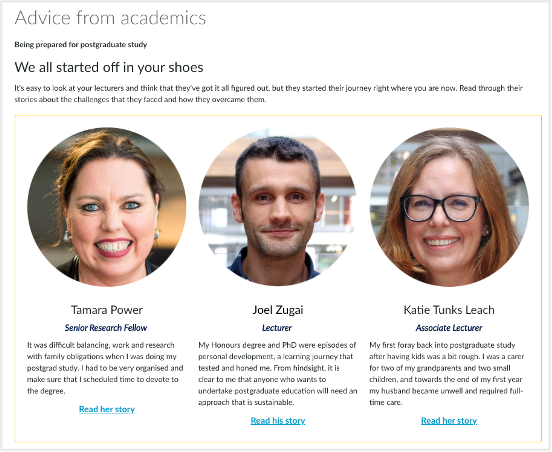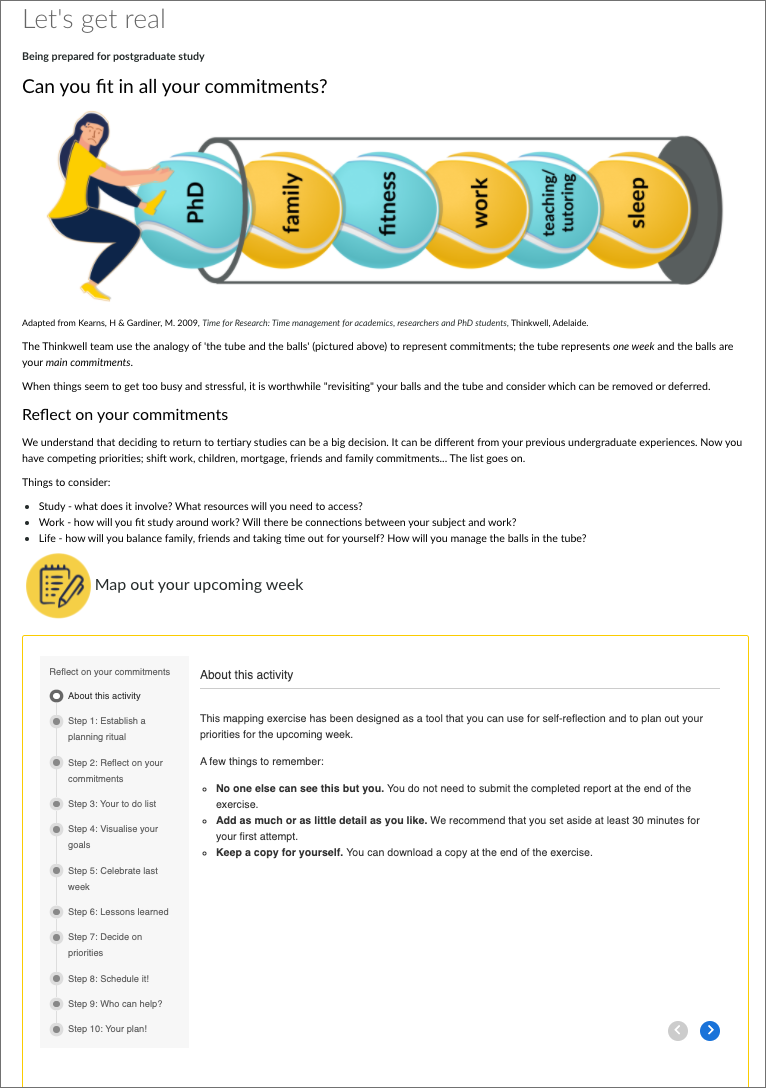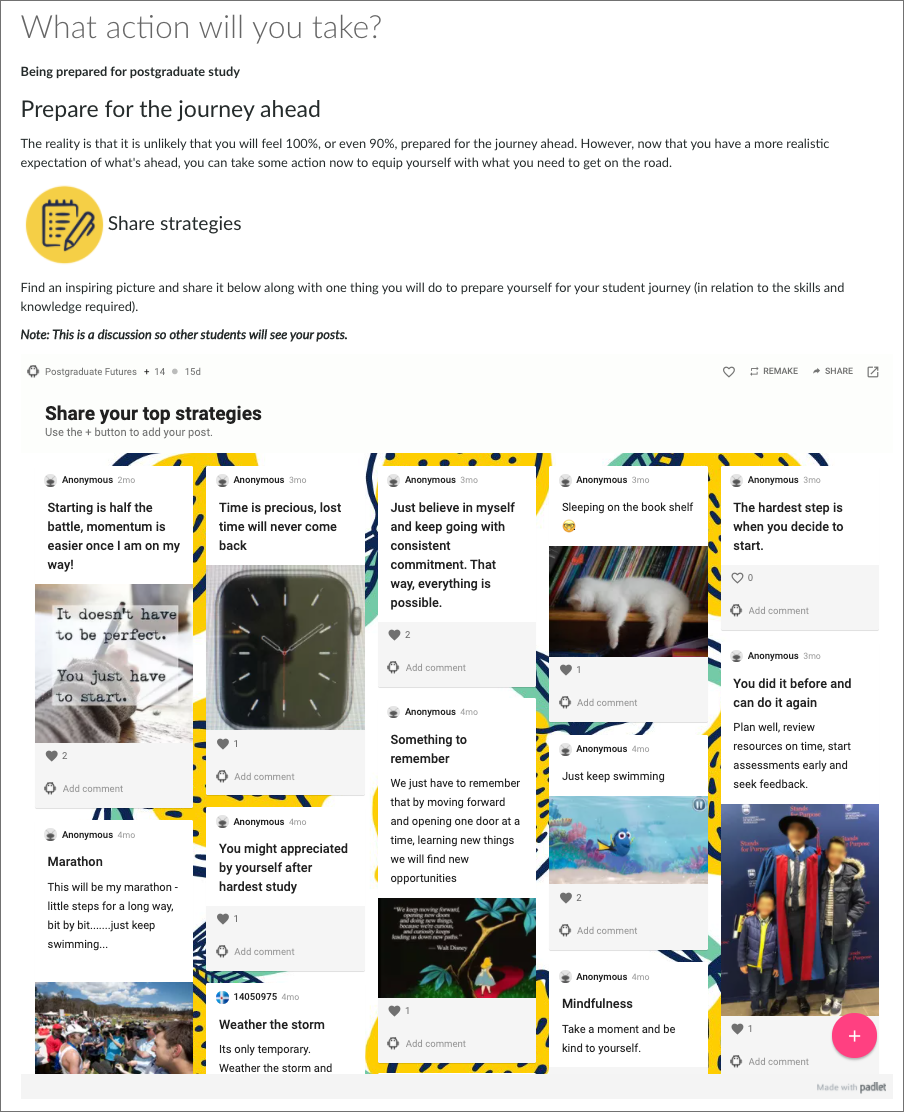In Part 1 of this two-part blog post, we summarised insights from our focus group held to better understand the student journey over the course of a postgraduate subject. In Part 2, we describe the online modules we created to address the insights from the focus group. We encourage you to reflect on these learning design strategies and whether they could be relevant in your own teaching.
What we did
The Postgraduate Learning Design team and Health Faculty academic team designed and developed online modules for delivery through Canvas. These were included in course home sites that students are able to access prior to beginning their subject.

The learning sequence
The modules were designed with the following learning sequence:
- Draw out and challenge student expectations about postgraduate study
- Provide an opportunity for students to realistically assess their commitments in relation to work, life and study, and develop strategies for managing them
- Draw out underlying self-limiting emotions and doubts, and provide suggestions for addressing them
- Provide opportunities for students to develop their own strategies
- Explore domains of health and wellbeing, and provide opportunities for students to identify what it means to them.
- Provide students with a ‘checklist’ prior to starting their subject and resources to access throughout their studies.
How we did it
The learning strategies we used are as follows:
Opportunities for reflection
Providing opportunities before, during and after learning enables the student to gain relevant and realistic insight into their current understanding and provides motivation to learn more.
Learning from the experiences of others
Students value advice and examples from fellow students, academics and professionals who have been through what they are going through. These ‘examples’ create a context which is important for understanding ‘why’ and promoting deeper learning.

Opportunities to share and learn from other students
We created activities such as interactive message boards and conversations that enabled students to share and see each other’s responses. Students learn from each other by comparing, seeing different perspectives and gleaning ideas they might not have thought of. These activities also create a sense of belonging which motivates and supports students as they learn.
Guided activities
Students were provided with opportunities to plan and reflect using evidence-based, structured approaches to guide their thinking and develop useful strategies.

Mixing it up
Good learning design engages the student on a number of levels; intellectually, emotionally, personally, visually and physically. This maximises engagement, deeper learning, motivation and importantly, transfer of learning, i.e. how they apply what they have learned. In these modules we used a mix of media, visual design, stories, personal reflection, and creative activities.

Feedback
The feedback from students has been overwhelmingly positive. Here are the poll results from students completing the Master of Advanced Nursing through our UTS Online (OPM) offering.

Main image by Andy Roberts
